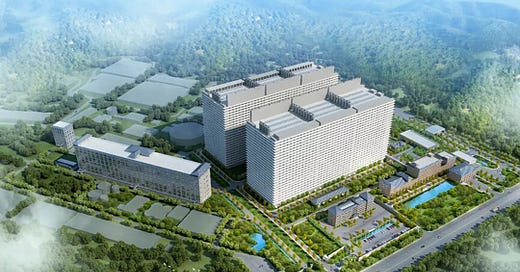High (rise) on the hog
What I talk about when I talk about raising pigs in high-rise buildings, meal-replacement bars made by ultrasonic waves and "chocolate" gianduja.
I was recently forwarded a link to an article in the Guardian about a high-rise building with the sole purpose of housing and raising pigs for human consumption. That this is far away in China, both mentally and physically, doesn’t make me feel any better. (As if this could never happen in the US?)
Like cultured meat, it evokes outrageous ideas lifted f…
Keep reading with a 7-day free trial
Subscribe to Technically Food to keep reading this post and get 7 days of free access to the full post archives.


